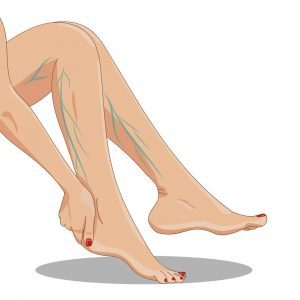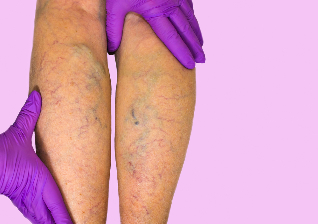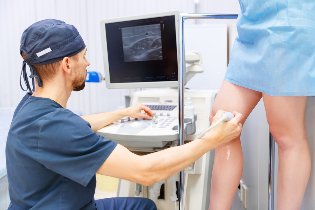Varicose veins of the lower limbs occurs for a number of reasons, which can be attributed to 3 groups: disorders of coagulation, the defeat of the wall of the vessel, the evolution of the congestion of the surrounding tissues. The causative factor affects the treatment, but the drugs are not able to reduce advanced the plot of vienna.

Tools for the veins support the tone of the vessels, but are not able to restore the functional insufficiency of the valves, leading to a dead end.
Varicose vein disease: causes
In the case of coagulation of the blood, it creates blood clots. The hormonal changes lead to disturbances in heart rhythm, decrease of the tonicity of the venous wall, to change.
The damage of the venous wall may be traumatic, physical, chemical, bacterial. Autoimmune diseases occurs a thinning of the venous wall due to the defeat of the antibody. The low physical load it is necessary to distinguish the barriers to the accumulation of the blood.
An increase of the pressure inside the container may occur due to the compression of the pressure of the surrounding tissues. Varicose veins with a combination like that is complicated. Probably the formation of venous ulcers.
The triggering factors of varicose veins of the lower limbs:
- Obesity is negative varicose veins in the plan. Excess fat increases the pressure on the veins, contributes to the changes;
- A poor diet, the consumption of products of plant contributes to the violation of the permeability of the blood vessels. The increase in the diet based on vegetable fibres helps to reduce the intake of toxins in the intestine. Physical inactivity is an important factor leading to obesity, disruption of the vasculature venous;
- Most people are exposed to complications during the sitting or standing position. The negative effects on an attack of the valves of the veins. Corsets and tight lingerie contribute to a compression of the veins in the groin area. Increase in abdominal pressure during the compression of blood vessels and venous a long time is the cause of the stagnation of the changes of the lower limbs;
- The wearing of high – heeled shoes- not to fiziologichno. The procedure promotes the stretching of the musculoskeletal ligaments of the device, which leads to the stagnation of changes in the veins;
- The valves are able to interrupt completely the container, lead to the stagnation of changes in the lower limbs. On the bottom of the wall pathology of the venous system overtraining, forming venous nodes;
- A genetic predisposition is formed as a result of mutation of the gene responsible for the structure of the vein wall. When the defects in protein increases the permeability of vessels, formed by constant inflammatory changes, swelling due to the transpiration of fluid through the membrane. The weakness of the vessel leads to an increase of the venous pressure. The result – varicose veins;
- Hormonal disorders during pregnancy could lead to an increase in the levels of estrogen and progesterone, involved in the formation of coagulation factors. The decrease of the tonicity of the venous wall on the bottom of the pathology led to the deformation and obstruction of the vessels;
- Diabetes is a pathology leading to a reduction in the levels of glucose in the blood, which creates a favourable environment for the development of blood clots;
- Alcohol abuse leads to thickening of the blood, increases the risk of formation of clots in the blood vessels;
- Walking prolonged, forced the sitting position – the triggering factors of varicose veins;
- The lack of food, the weight lifting, the slower the flow of blood to the heart, the development of stagnation is the triggering factors of the pathology;
- The chronic constipation are accompanied by an increase in abdominal pressure, the difficulty of the blood flow of the lower limbs;
- The dehydration of the body under the influence of intense sun rays leads to thickening of the blood, the acceleration of the formation of blood clots;
- Venous insufficiency, congenital abnormalities contribute to the pathology of the cardio-vascular activity;
- An overdose of medication increases the clotting of the blood, leading to blood vessel blockage, thrombus;
- Surgical interventions contribute to the increase in the volume of blood, increase the likelihood of thromboembolic disease.

Varicose veins of the legs is polietiologic disease. Patients usually, there are a few reasons that have led to the development of the nosology.
The varicosities of the lower limbs: symptoms and treatment
The signs of varicose veins specific for the diagnosis. Secrete 2 forms of the disease, according to the characteristics of the aetiological factors – primary, secondary.
The primary form is related to a weakness of the venous wall, born under the influence of congenital or acquired factors. The secondary form develops under the influence of other reasons.
The causes of the varicose disease of the feet:
- Swelling of the skin.
- Disorders of pigmentation (darkening);
- The pain syndrome in the evening and in the afternoon;
- Trophic damage to the skin (eczema, dermatitis).
Original varicose veins are due to weakness of the vein wall, the development of obesity, the proliferation of connective tissue fibers. It is this pathology secondary is formed due to a rupture of the flow, venous, trauma and tumors. The degree of increase of the stretching of the venous wall is unpredictable. The pathology increases the risk of thrombo-embolism, which can lead to a fatal outcome. Usually, blood clots are located on the feet, but there are cases of embolism of the venous system of the hands or the abdomen.
Secondary complication of the disease — ulcers trophic. Even a small scratch in violation of the food web may contribute to the formation of ulcers on the legs. With the pathology difficult to cope when you go to your doctor. The treatment lasts for tens of years, and so it must be time to go to phlebologist.
Every day doctors are confronted with hemorrhages. If the disease is started, the veins protruding above the surface of the skin. The pathology leads to thrombophlebitis with irreversible consequences. Regularly check the state of the venous system. To avoid the pathological changes should be connected thrombophlebitis with irreparable consequences.
The uniqueness of the extension of the vein wall in that the pain syndrome occurs only on the initial phase. Gradually the receptors get used to the pain, so the wider the vienna, are less obvious pain.
The symptoms of varicose veins early:
- Seal;
- Redness;
- A burning sensation;
- Of the pain.
By venous valves the blood cannot move in the opposite direction. At their insufficiency develops opposite of the bloodstream, that's why develops as a stagnation. The accumulation of blood in a specific location creates conditions for the formation of blood clots. Such an image is re-drawn in violation of the technology of treatment of varicose veins. At the place of injection is formed by an inflammation, creating opportunities for the formation of a blood clot, increasing the adhesive properties of the vascular wall.
The classification of thrombophlebitis downstream:
- Acute;
- Chronic.

Thrombophlebitis acute-develops rapidly. In the place of the localization of varicose veins that occur the pain, redness of the skin, the expansion of vienna.
Chronic is not characterized by the expressed signs. The syndrome of pain in the pathology of the door of intermittent nature. The patient are concerned about the pain after exercise. The pockets disposed elastic compression. Patients are encouraged to wear special bandages.
Drugs and surgery
The drug treatment of varicose veins of the lower limbs does not get rid of the pathology. In violation of the permeability of the walls of the blood vessels, the stagnation of the changes of new blood clots, which must be treated rapidly to avoid pulmonary embolism and death. For these objectives, apply the tools and anticoagulants in the form of oral tablets, topical creams local.
Add drug medication is popular drugs, physiotherapy (magnet, the track "bicycle", physiotherapy). To get rid of the rash, it is recommended of a decoction of oak bark, chamomile, st. john's wort.
Surgery to remove the varicose veins on the legs – types, principles of treatment
These methods are currently applied less often, because there are more and more popular operation.
Sclerotherapy – introduction intravenously adhesive substance, which in the early stages of the disease in several sessions eliminates varicose veins. The procedure involves the introduction into the knot of varicose veins with a special substance, contributing to the encroachment of the lumen of the vein.
Coagulation affected by the veins of a laser – modern procedure does not produce the excision of the tissue of a knife.
The indications operational phlebectomy:
- The considerable expansion of saphenous veins;
- The risk of thrombo-embolism;
- Trophic rupture of the skin;
- Thrombophlebitis acute;
- Pockets, as expressed in the fatigability of the patient.
You can't proceed with the operation during the pregnancy, severe infections, coronary heart disease, inflammation of the lower limbs, pyodermite, eczema. The only way of treatment of the disease with varicose veins of the deep veins in view of the correction of the work of the valve of the device is a surgical operation.
Laser therapy shows patients with diseases of the cardio-vascular system, the region of the genito-urinary tract, increased blood pressure, when the operation is contra-indicated.
To get rid of the poor vascular network necessary you can perform radio-frequency coagulation. The dignity of the operation — the indolence, the lack of a cosmetic defect of the skin, impaired work ability.
The reporting of the administered to the disease – the pathology at doppler, duplex varicose veins in the early stages. The lack of care – contact with sclerosant deep of vienna, a decrease in the effectiveness of treatment in advanced cases.
The treatment of chronic venous disease
In the chronic varicose veins it is necessary to correctly apply the elastic compression. For these purposes, has developed a program:
- Compression Jersey 1-2 class at 0 degree;
- Elastic compression Jersey 1-2 class mono drug therapy, physiotherapy in the 1st degree;
- At rank 3-4, it is recommended that elastic compression Jersey 2-3 of the class continuous drug therapy, local treatment with ointments, physiotherapy.

Misuse of some types of therapy protect standardized treatment of varicose veins-defined drugs. Assign the multiplicity, the dose will be a doctor.
Even the magnet when the varicose veins of the lower limbs is strictly necessary. After the procedure, it is necessary to assess the nature of the local changes.




































